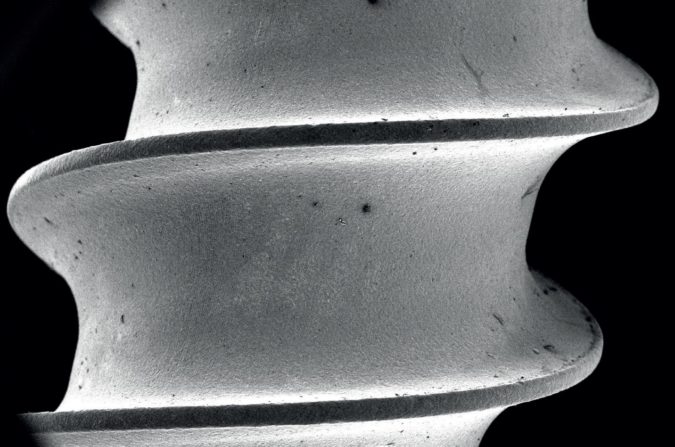European project LASER4SURF: RESCOLL surfs on LIPSS technology
Rescoll’Blog / 10 janvier 2020 The laser texturing process for obtaining LIPPS (Periodic Surface Structures) is based on the interaction of laser beams with the surface. It allows very high precision (100nm -1 μm) and thus improves the characteristics and functions of surfaces.
The laser texturing process for obtaining LIPPS (Periodic Surface Structures) is based on the interaction of laser beams with the surface. It allows very high precision (100nm -1 μm) and thus improves the characteristics and functions of surfaces.
The objective of the European project LASER4SURF, co-financed in the framework of the Horizon 2020 program, is to bring the technology to mass production thanks to a reduction in implementation costs and a rate of around 0.1 min/cm².
The main deliverable is the development of an easy-to-use all-in-one machine that includes simulation and monitoring tools and the laser texturing tool, in this case metal surfaces. « The technology improves the performance of a product by changing the surface without altering the chemical composition or adding a coating. It is planned during the project to study three application cases: the improvement of implants in the area of orthopaedic or dental implants by improving the osseointegration of implants and offering a better biological response of the surrounding tissues; new generation batteries with the improvement of the chemical properties of current sensors and finally linear encoders – sensors that record the position and linear displacements in machines for example – with a change in the reflection properties reducing misalignments » presents José Alcorta, manager and founder of SRC Rescoll.
Alongside seven partners (CEIT, Lasea, Multitel, Iris, CIC Energigune Fundaziola, Fagor Automation and ESCI), Rescoll plays a major role in determining the optimal surface properties of implants. This project allows Rescoll to broaden its range of skills in surfaces and to remain at the forefront of new texturing technologies. In addition, its subsidiary Rescoll Manufacturing will offer this new surface texturing process, which is more environmentally friendly, meets regulatory requirements and is economically attractive.
The project should be completed in September 2020, opening up significant prospects for the consortium members and the industry.
This article is taken from the magazine « 360° R&D », published by ASRC. To download this issue: